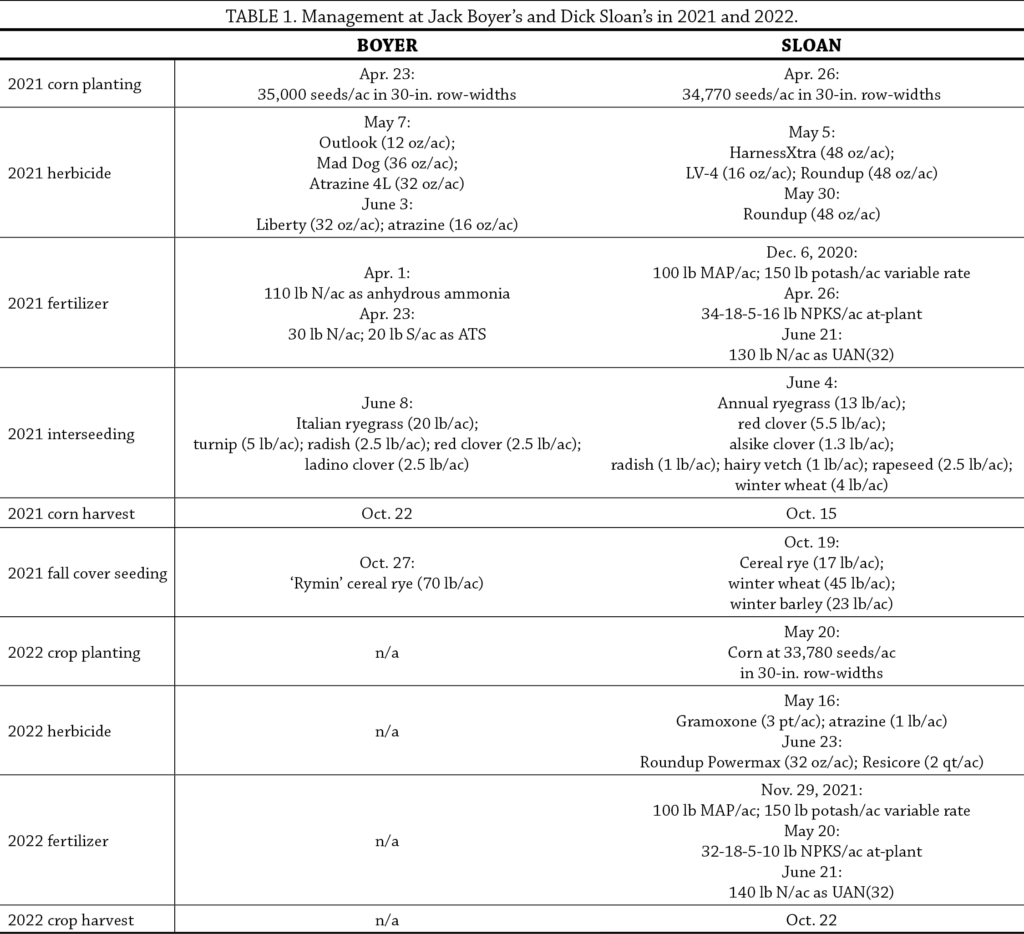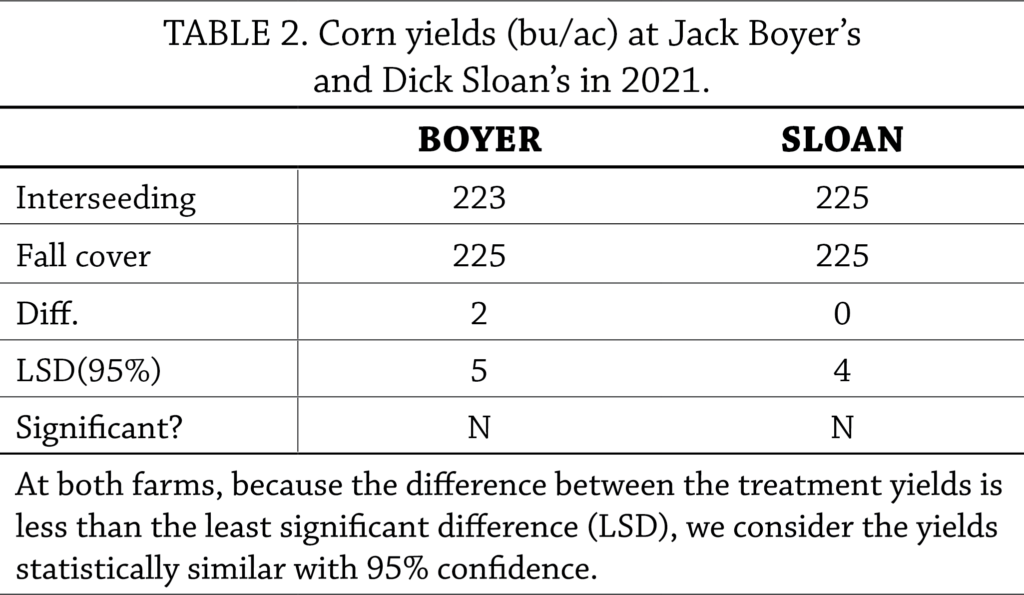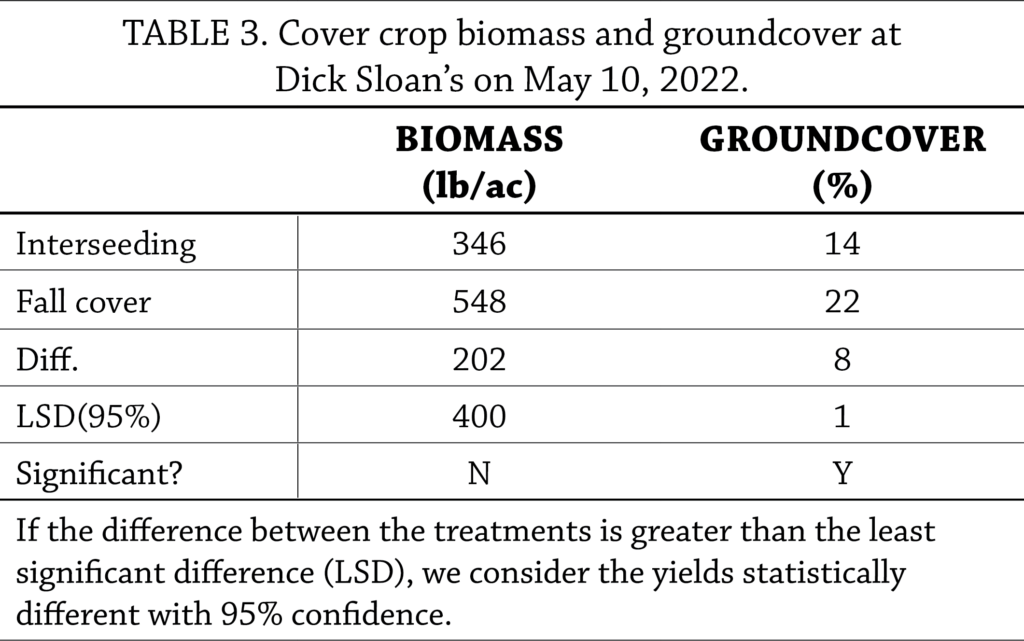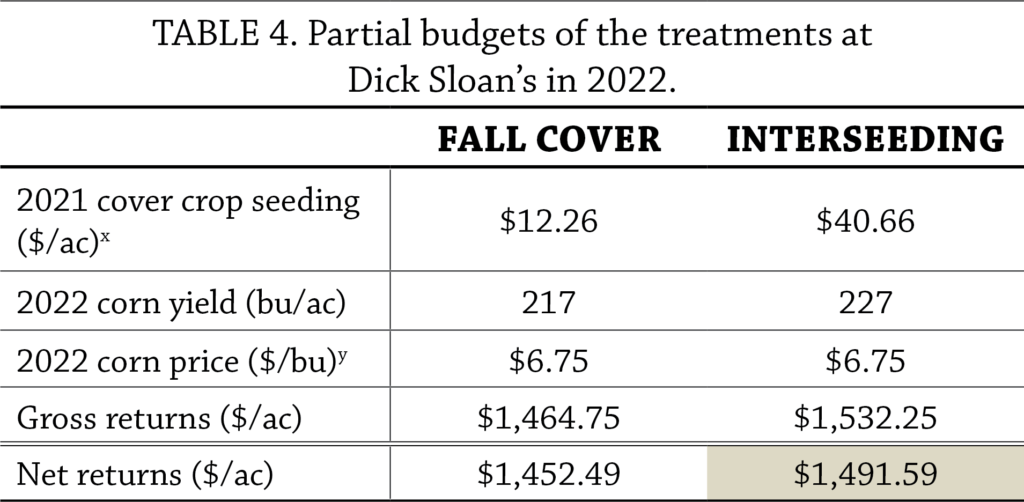This research was funded by Walton Family Foundation.
In a Nutshell:
- Jack Boyer and Dick Sloan have found success for years using winter small grains like cereal rye and winter wheat as cover crops when seeded in the fall.
- Both wanted to determine if interseeding a cover crop when corn reaches V5 stage in early summer can be a reliable method for establishing and overwintering a more diverse cover crop suite compared to seeding a winter small-grain cover crop post-harvest in the fall.
Key Findings:
- Only Sloan had success with interseeding: The mix he seeded to corn in 2021 overwintered and by spring 2022 produced just as much biomass as the cereal rye, winter wheat and winter barley cover crops he seeded in fall 2021. The mix that Boyer interseeded failed to overwinter.
- At Sloan’s, corn following the interseeded mix in 2022 produced better yields and net returns ($39/ac) than corn following the winter small-grain cover crops.
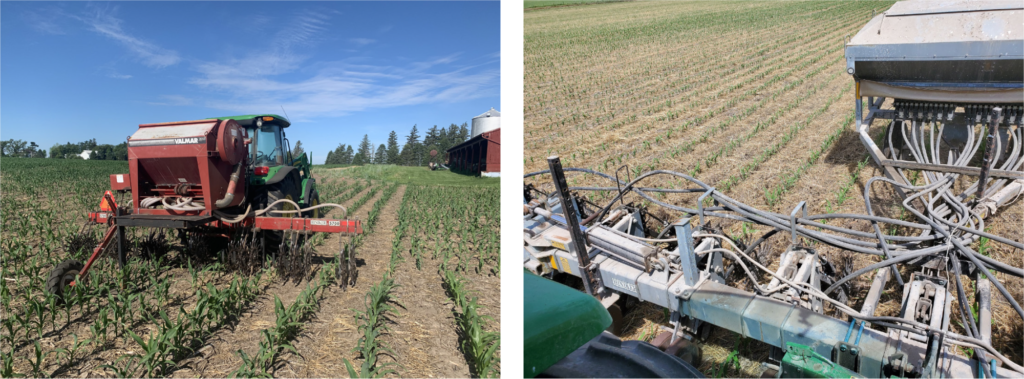
At left, Jack Boyer interseeding cover crops to corn on June 8, 2021. At right, Dick Sloan interseeding cover crops to corn on June 4, 2021.
Methods
Design
Both Boyer and Sloan planted corn in 2021 following soybeans. In June 2021, they both established two treatments:
- Interseeding – mix of cover crops interseeded to corn at ~V5 stage.
- Fall cover – winter small-grain cover crop drilled after corn harvest in fall.
Both cooperators wished to learn how the cover crop treatments affected corn in 2021 and the succeeding cash crop in their rotations in 2022; soybeans for Boyer and corn for Sloan. However, only Sloan assessed the effect of the cover crop treatments on the 2022 cash crop because the interseeded mix at Boyer’s failed to overwinter (more below).
Boyer implemented four replications of the two treatments (Figure A1) in strips measuring 30 ft wide by 1,600 ft long. Sloan implemented four replications of his two treatments (Figure A1) in strips measuring 30 ft wide by 2,400 ft long. Field management at both farms is presented in Table 1.
Measurements
Sloan collected samples of interseeded cover crop biomass from three locations in each strip near the time of corn maturity on Sept. 18, 2021. Sloan weighed the samples after allowing them to air dry for 5 weeks. The following spring, Sloan collected samples of cover crop biomass and groundcover from all treatment strips on May 10, 2022. Biomass samples were collected in the same manner as in fall 2021. To determine groundcover, Sloan took photographs from three locations in each strip and then we analyzed them using Foliage, an open-source web-based application.[1] Boyer did not collect cover crop biomass or groundcover data because the interseeded mix failed to overwinter. He noted that the atrazine included in the June 3, 2021 herbicide application at his farm was by mistake and that it substantially harmed the Italian ryegrass in his interseeded mix.
Both Boyer and Sloan harvested corn and recorded yields from each individual strip in fall 2021. Sloan harvested corn from the treatment strips in 2022 as well. Reported yields are corrected to 15.5% moisture.
Data Analysis
To evaluate the effect of treatment on cover crops and corn, we calculated the least significant difference (LSD) using a t-test at the 95% confidence level. If the difference between the two treatments was greater than the LSD, we would expect such a difference to occur 95 times out of 100 under the same conditions – we refer to this as a statistically significant effect. On the other hand, if the resulting difference between the two treatments was less than the LSD, we would consider the results to be statistically similar. We could make these statistical calculations because both Boyer’s and Sloan’s experimental designs involved replication of the treatments (Figure A1).
Results and Discussion
2021 cover crop biomass
From the samples Sloan collected of the interseeded cover crop in September 2021, the mix produced 98.3 lb/ac.
2021 corn yield
At both farms, the interseeded cover crop mix had no effect on corn yields in 2021 (Table 2). Note that during 2021 the Fall cover treatment was technically a no-interseeding treatment as far as the corn was concerned that year.
2022 spring cover crop biomass and groundcover
At Sloan’s, the two cover crop treatments produced statistically equal amounts of biomass by May 10, 2022 but the Fall cover (cereal rye, winter wheat, winter barley) produced more groundcover (Table 3). Timely rainfall in August and October 2021 as well as March and April 2022 likely contributed to the Interseeding successfully overwintering at Sloan’s (Figure A2b).
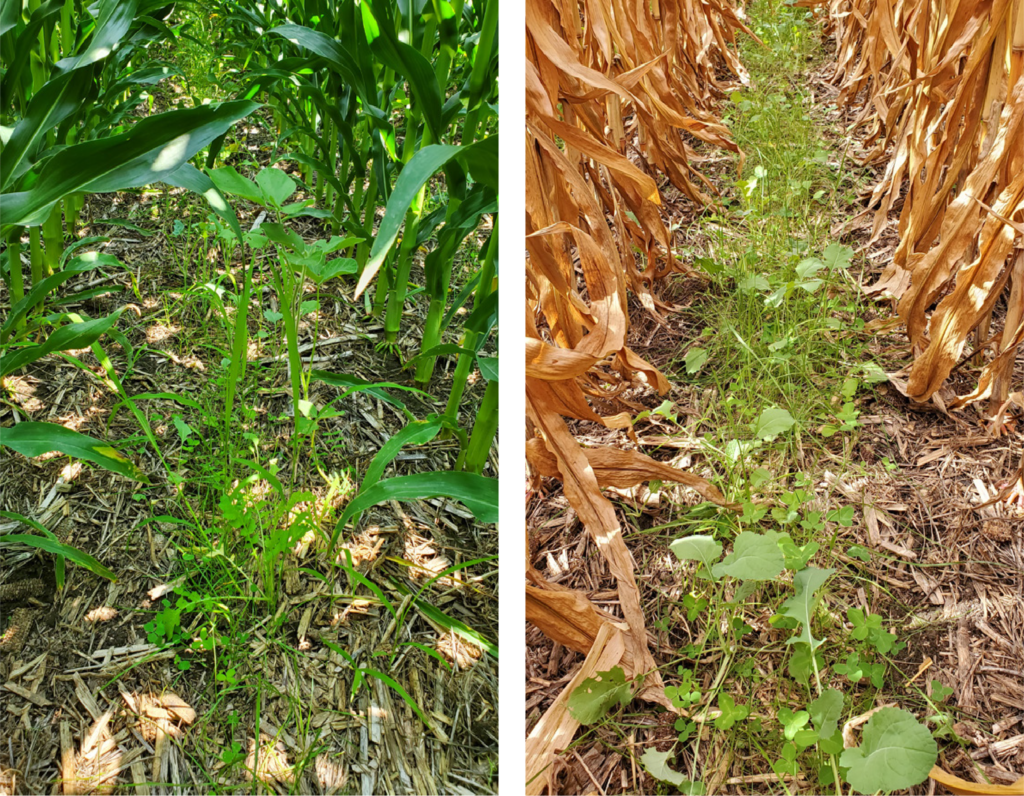
At left, the interseeded cover crop mix at Dick Sloan’s on July 17, 2021. At right, the mix on Sept. 26, 2021. The cover crop mix was interseeded to corn on June 4, 2021.
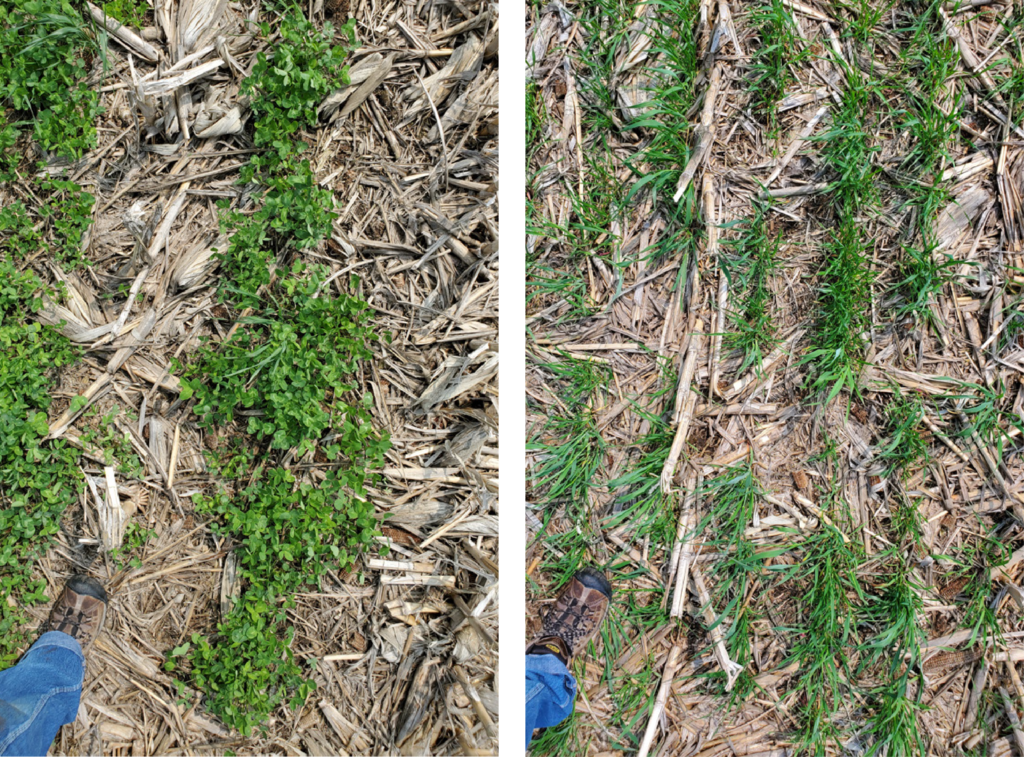
At left, the cover crop that was interseeded to corn in June 2021 at Dick Sloan’s. At right, the cover crop seeded after corn harvest in fall 2021. Photos taken on May 10, 2022.
2022 corn yield
Corn yields in 2022 at Sloan’s were improved by 10 bu/ac from the Interseeding in 2021 (Figure 1).
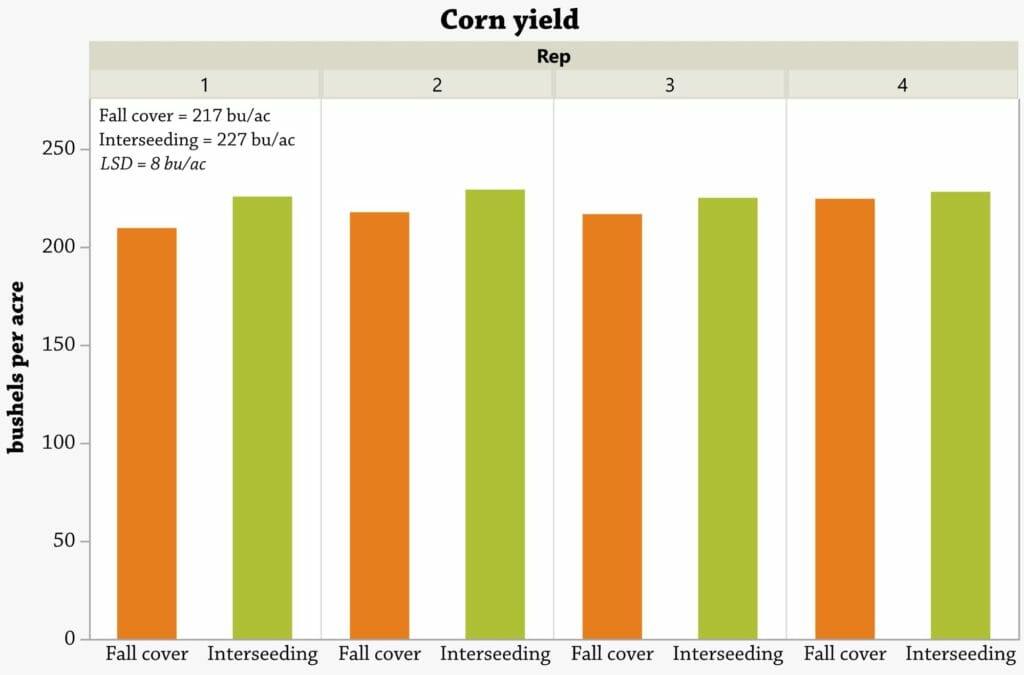
FIGURE 1. Corn yields by replication and treatment at Dick Sloan’s in 2022. In the upper left are the treatment averages. Because the treatment averages differed by more than the least significant difference (LSD = 8 bu/ac), we consider the treatments to be statistically different at the 95% confidence level.
Moreover, the Interseeding treatment resulted in improved net returns by $39/ac (Table 2). The greater costs of the Interseeding were more than offset by the yield improvement. “This trial shows me that it really might be worth the battle to get some perennial legumes, brassicas and other cover crops growing between the rows of first-year corn in my corn-corn-soybean rotation,” Sloan said. “It can be worth the expense to get away from a heavy reliance on winter small grains for cover crops.”
Conclusions and Next Steps
Boyer and Sloan expressed interest in learning about different strategies for incorporating cover crops on their farms: be it cover crop species other than winter small grains or seeding cover crops in the summer rather than post-harvest in the fall. Both have had plenty of success with winter small grains like rye and wheat for years. Boyer has tried summer interseeding for a few years and has evaluated numerous species. This trial helped him identify species that may not be successful when interseeding to corn on his farm. Sloan, on the other hand, did have success with interseeding. He found this appealing because if interseeding in the summer can be a successful strategy it would reduce pressure in the fall for getting other acres on the farm seeded to cover crops. “I need to add more legumes to my cropping plans. If I can establish clover in my corn the same as I do with my small grains, it can thrive once the corn is harvested and continue to thrive the next spring,” Sloan said. “I accept that I had some beginner’s luck but it’s really fun to see a cover crop change give a significant boost to second-year corn yields.” When considering how to continue this practice on the farm, Sloan added the he would like to improve his interseeder with better planting units in order to get a reliable, consistent cover crop established in the summer underneath the corn canopy. “The plants we can grow with interseeding are so different than the ones we plant in October.”
Appendix – Trial Design and Weather Conditions
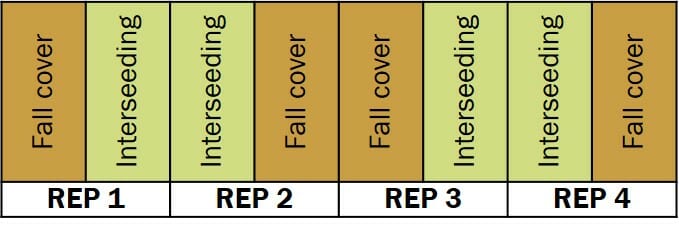
FIGURE A1. The cooperators’ experimental design consisted of four replications of the two treatments. This design allowed for statistical analysis of the data.
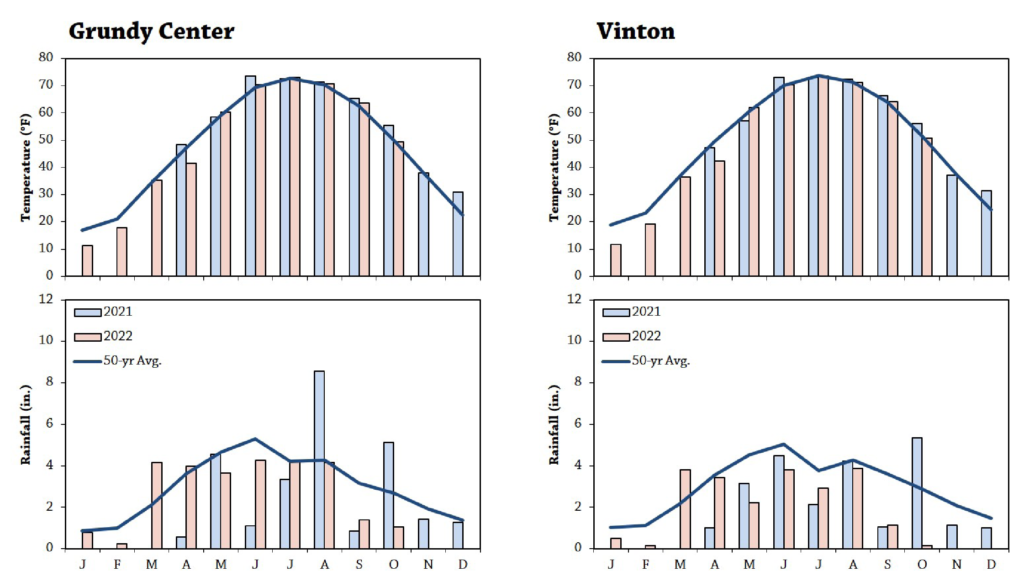
FIGURE A2. Mean monthly temperature and rainfall during the trial period and the long-term averages at the nearest weather stations to a) Boyer’s (Grundy Center) and b) Sloan’s (Vinton) farms.[2]
References
- Patrignani, A. 2020. Foliage (Version v1.). Zenodo. https://andres-patrignani.github.io/foliage/ (accessed November 2022).
- Iowa Environmental Mesonet. 2022. Climodat Reports. Iowa State University. http://mesonet.agron.iastate.edu/climodat/ (accessed November 2022).


